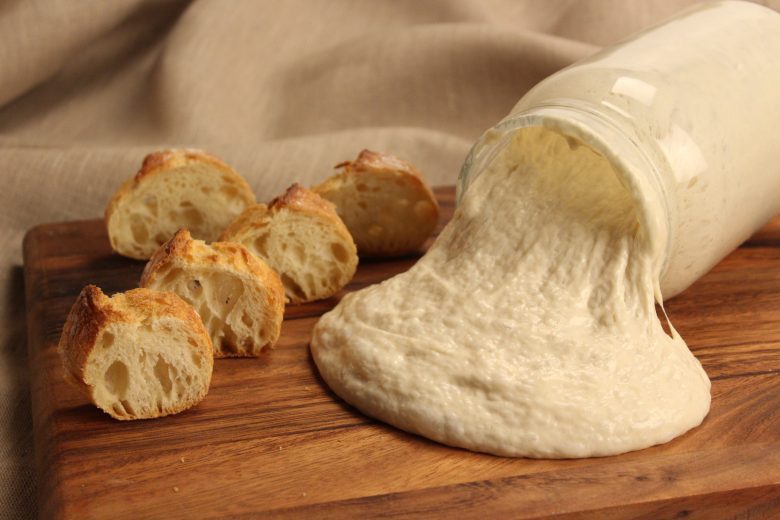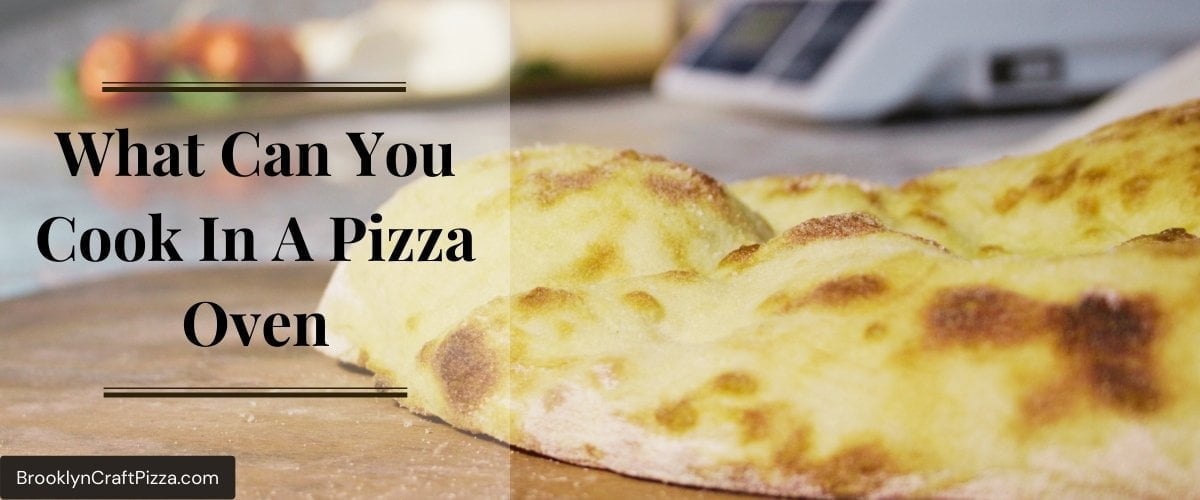Most traditional ways of making bread require a starter. If you make pizza often, you might have come across the term “Poolish.” Poolish is a starter and can be used in various bread recipes. But what is Poolish dough? Follow along to find out.
What is Poolish Dough?
Poolish is a type of pre-ferment you make for your pizza. It also makes any baked good soft and aromatic. Poolish is a dough that ferments in advance to improve your final dough’s texture, flavor, and shelf-life. You might be used to combining all your ingredients at once when making pizzas or bread.
However, Polish bakers perfected the Poolish technique. It requires a pre-ferment mixed in two stages:
Step 1: Prepare a small portion of the dough and let it sit and ferment for 6-16 hours.
Step 2: Check the dough to ensure it has air bubbles and is full of yeast. Add it to the remaining ingredients and let it rise.
Pre-ferments are important for the best-tasting bread. All pre-ferments are made the same way; they only differ in water content.
How to Make a Poolish Pizza Dough
Anyone can make a delicious homemade pizza with the right recipe. However, this pizza recipe takes 2 days, and it’s worth seeing how bubbly the crust can get. Remember that any pizza recipe including the top 25 seafood recipes will do.
Here are the ingredients you will need:
1) Water
In most instances, using tap water will do. However, if you have hard water, then bottled water is fine. It will probably not make a difference.
2) Honey
Some recipes use honey, and others don’t. There won’t be much difference whether you use honey or not. Adding honey is optional.
3) Salt
Kosher or non-iodized salt is preferable since they have no additives or anti-caking properties. However, normal table salt is saltier, so you will need half the amount.
4) Yeast
There are two choices to make. You can use either active yeast or dry yeast. You will have to activate dry yeast in water before using it. However, you can mix instant yeast right in without an issue. Store-bought yeast will also be fine.
5) Flour
There are three options to choose from. 00 flour, all-purpose, or bread flour. 00 flour helps create a fluffy dough, also known as pizza flour. All-purpose flour will also work just fine. However, using bread flour will give you a heavier crust in the final dough.
Method:
You will need a single 2-quart glass or plastic container with high sides for the Poolish pizza dough to sit in.
Step 1: Prepare the Dough
Using natural or wild yeast and warm water, whisk the ingredients in the 2-quart plastic container until the yeast dissolves. It is recommended to use a thermometer to ensure the warm water is not too hot. It could damage the yeast. Leave the mixture for 3 minutes, then add flour and water as you stir vigorously.

Image source: finedininglovers.com
You can use a wooden or plastic spoon to stir. If you are feeling fancy, a dough kneading machine for your home pizza will still work. Keep stirring until a smooth batter has formed. It should be somewhat elastic. You can test it with a wooden spoon. The pre-ferment starter will be thick and elastic at first, but it will soften once you let it rest.
Step 2: Let the Dough Rest
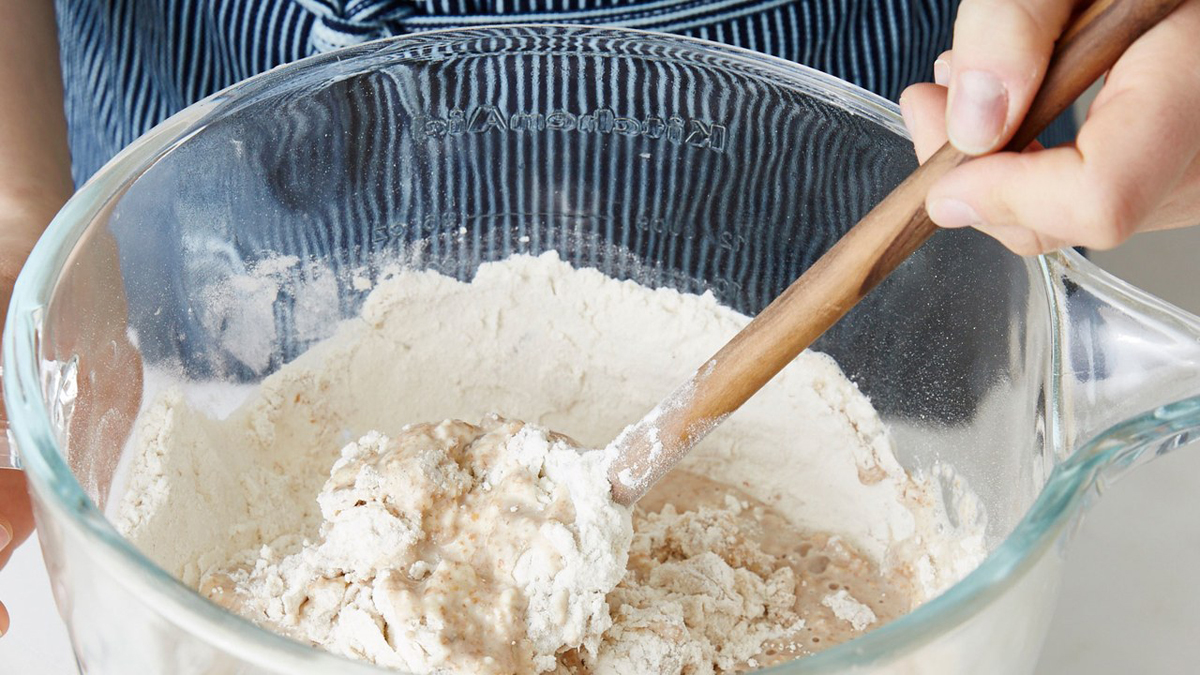
Image source: tasteandflavors.com
Cover the plastic container with cling film and mark the side of the container. Your pre-ferment starter will triple in size; therefore, ensure enough room. Leave the dough somewhere dry and at room temperature for at least 7 or 8 hours. However, if you are open to trying another method, let it rise for 1 hour at room temperature. After that, you can transfer it to the fridge overnight to let it rise slowly.
Step 3: Let it Rise

Image source: risenflour.com
You can use it immediately if you let it rise to room temperature. However, if you place the starter in the fridge, you should let it warm up before use for at least 3 hours. To know if it’s ready, the dough will have tripled in size. You should also notice bubbles and folds in the dough. The Poolish should be used before the dough deflates in the next few hours.
Tips for Making Poolish Pizza Dough
- Before covering the sourdough starter with plastic wrap, spray olive oil on the batter to avoid it forming a crust or drying up.
- If you want to use your Poolish immediately after removing it from the fridge, ensure to use warm water when mixing flour and water. It will compensate for the cold dough.
- To get bubbly dough balls, work from the inside of your ball and work outwards to push the air out.
- Mix salt in water and use it for kneading the dough beforehand. This spreads the salt evenly through the dough for an all-round taste.
Why Should you Use Poolish?
Many recipes require a starter. For example, if your pizza dough recipe requires a starter, you will have the most delicious pizza or sourdough bread. Here are the reasons why it’s recommended to use a Poolish starter.
a) Long Shelf Life
Poolish can last for 6 months. Additionally, it reduces the rising time of your pizza dough. As a result, you will have great pizza dough every time. When making pizza, you have to add the Poolish dough to the rest of the ingredients. You can also add more yeast as needed since the amount in the Poolish might need to be more for your recipe.
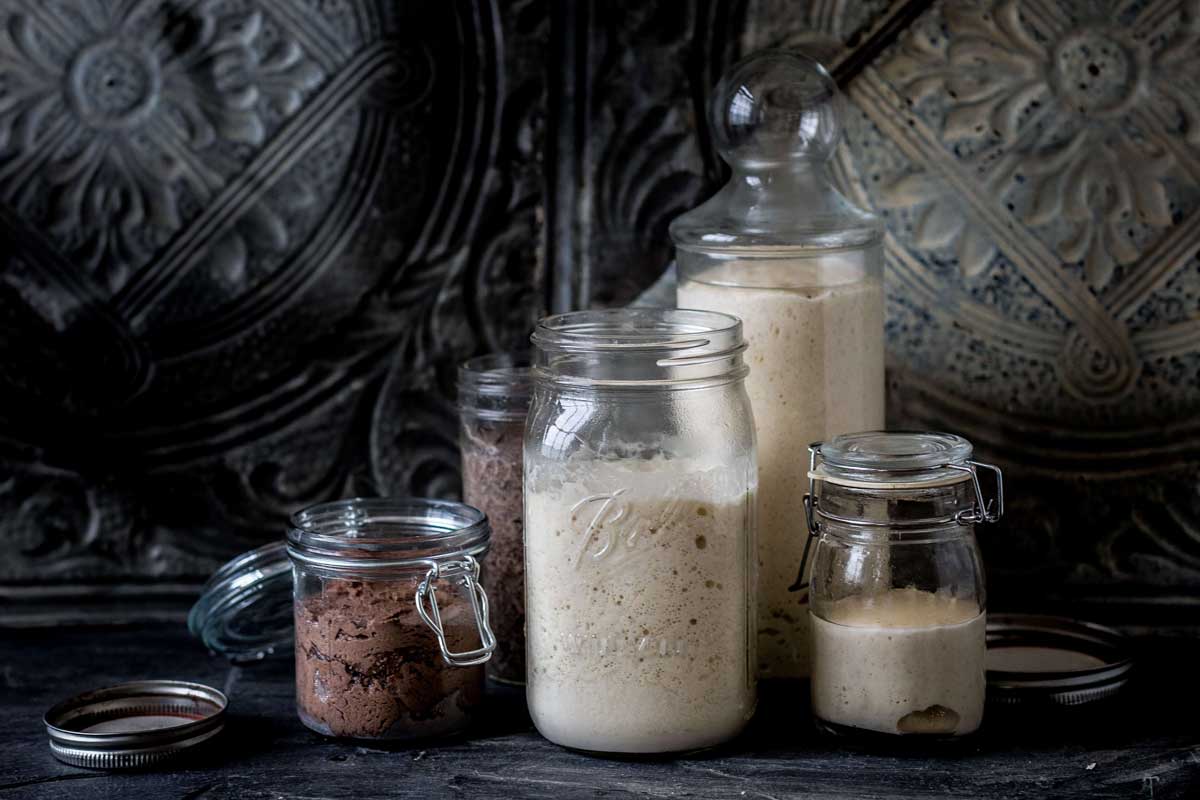
Image source: kingarthurbaking.com
The best part about Poolish is its high hydration content and how you can keep feeding it to increase its shelf life. Poolish is versatile, and you can make it with medium-strength dough. The longer shelf life also means that you can make a Poolish in bulk fermentation. It will act as an excellent leavening agent when making dough.
b) Taste Enhancer
Poolish makes your pizza taste 10 times better. The best part about Poolish is that you can have the best pizza dough in half the time with minimal effort. Furthermore, you can easily improve THE flavor and texture of your baked bread or other baked goods. Poolish adds a complex flavor to your main dough and gives it an airy and delicious taste.
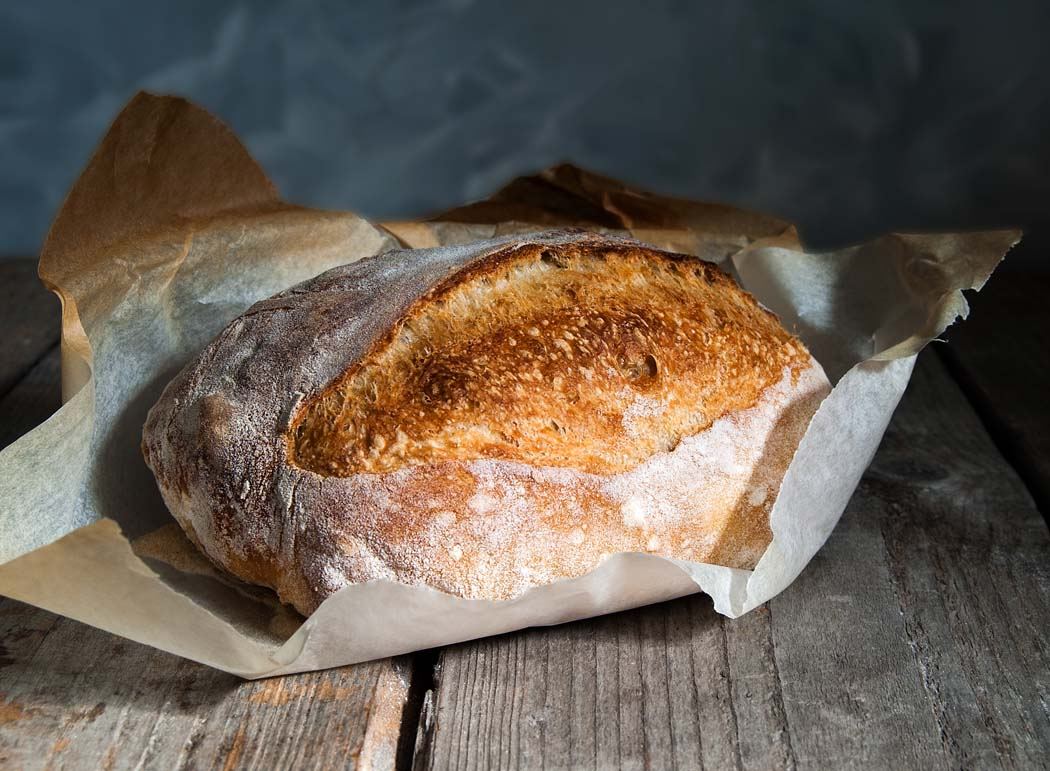
Image source: sourdough&olives.com
Additionally, the flour and water ratio is 1:1, meaning there are equal parts flour and hydration to add to your main dough. Furthermore, the hydration provides the best environment for yeast and acid-producing bacteria to grow and ferment the dough. It’s what causes any pizza dough to rise and have a beautiful, airy texture. Additionally, remember that you have to use the best flour for pizza for different crusts, types, and styles.
c) Poolish is a Faster Way to Prove Dough
Traditional methods of proving dough can take up to 72 hours. Poolish cuts the time in half and gives you proven dough within hours. You can easily save time by making Poolish instead of going the traditional way. Furthermore, besides saving time, you are also saving yourself a lot of effort and getting a fantastic taste.

Image source: theguardian.com
Remember that you can alter the time it takes to ferment Poolish. The more time your Poolish or any other pre-ferment gets, the less yeast you have to use. Therefore, if you want to use the Poolish method and have it take less time, adjust the amount of yeast in the flour. Most pizza maestros prefer Poolish because it gives the dough characteristics that make it seem like it has been proven for a long time.
d) Natural Maturation
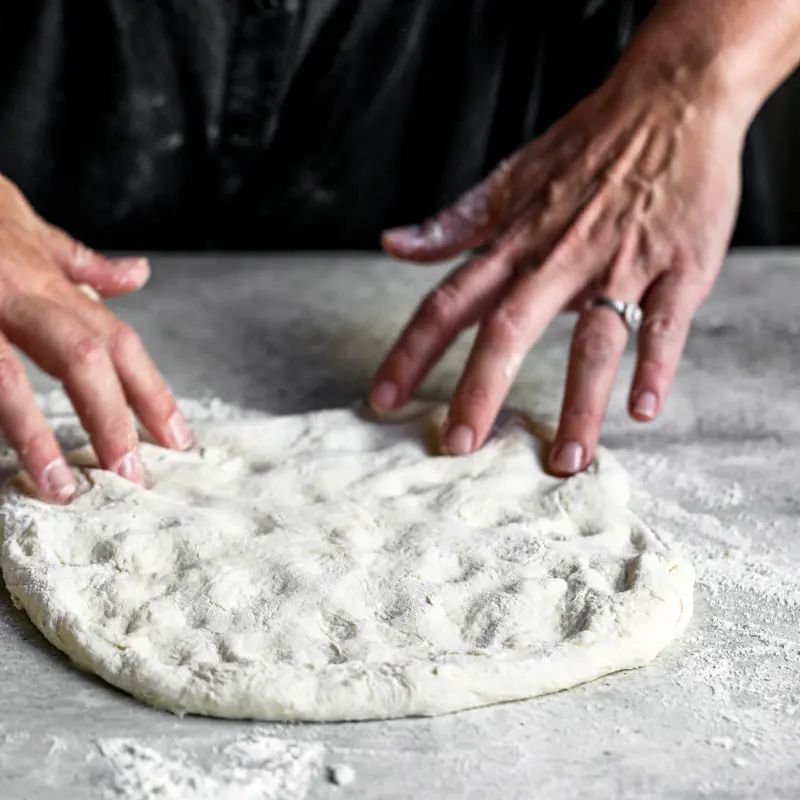
Image source: belula.com
Poolish achieves natural maturation due to a long fermentation process. Therefore, active Poolish is excellent for crust browning and flavor development due to the breakdown of proteins. In addition, the amino acids provided aid in the texture and taste of the dough. They also make the dough soft, reduce the mixing time, and improve the machining properties of the dough.
Types of Pre-ferments
While Poolish is an elite pre-ferment, it is limited in what goods it can bake. It is highly recommended for baking, preparing bread dough, and making pizza. Other starters come under the term “pre-ferments.” Let’s take a look.
i) Biga
Biga is close to a Poolish culture because the flour and water ratio is almost the same. However, Biga is stiffer than Poolish because it takes 2 cups of wheat flour to one cup of water. Biga also uses fresh yeast. However, you can use store-bought or commercial yeast. Furthermore, Biga is the Italian term for “pre-ferment.”
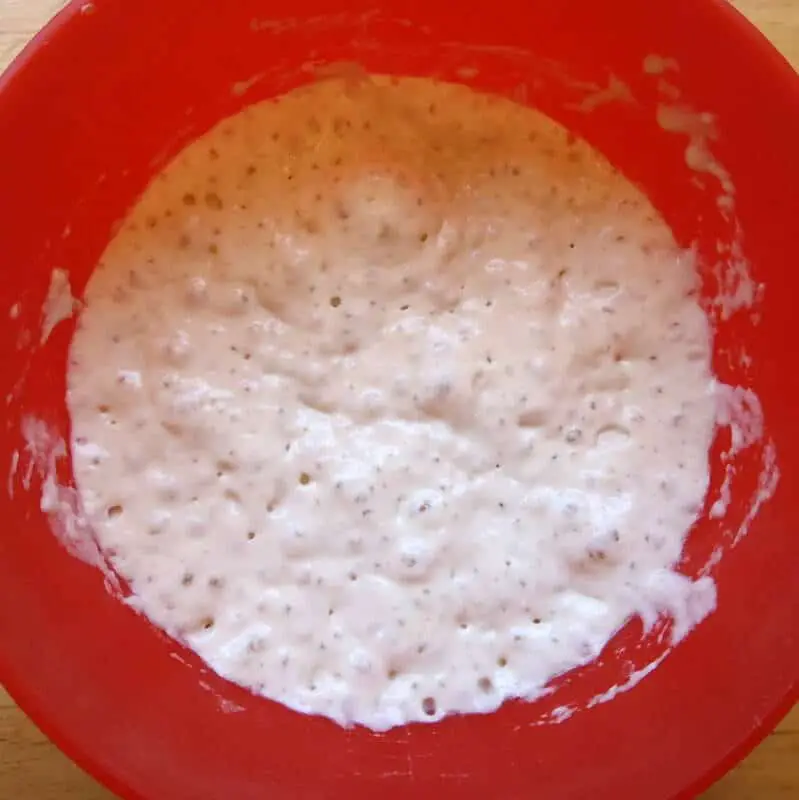
Image source: crustylabs.com
Since Biga and Poolish are very close in texture and process, they are often used interchangeably. Therefore, it remains up to you to consider if you want a stiff pre-ferment (Biga) or a loose pre-ferment (Poolish).
ii) Sourdough starter or Levain Culture
Sourdough starter is made with natural yeast instead of dry or instant yeast. The combination of yeast and bread allows the yeast to multiply, produce organic acids and ferment the dough. A sourdough culture is perfect for cultivating and making use of natural bacteria. There is a small difference between sourdough starter and levain, hence why the terms are used in place of each other.

Image source: greatbristishchefs.com
Liquid levain is the active part of the sourdough starter that’s taken out to be mixed in with other ingredients. Even a simple bread recipe could use some levain. Levain can be either stiffer or looser than the starter. Additionally, when it comes to levain, it can be either a portion of the starter or a starting point for levain with a different level of hydration.
iii) Patés Fermentées
Also referred to as “old dough,” this starter mainly uses salt to maintain its state. This starter is widely used in France to make baguettes. It is made strictly with traditional flour (without additives), natural yeast, and salt. It is crucial to use something other than a commercial yeast strain. For patés fermentées to be legitimate, it cannot be frozen at any point of making it.
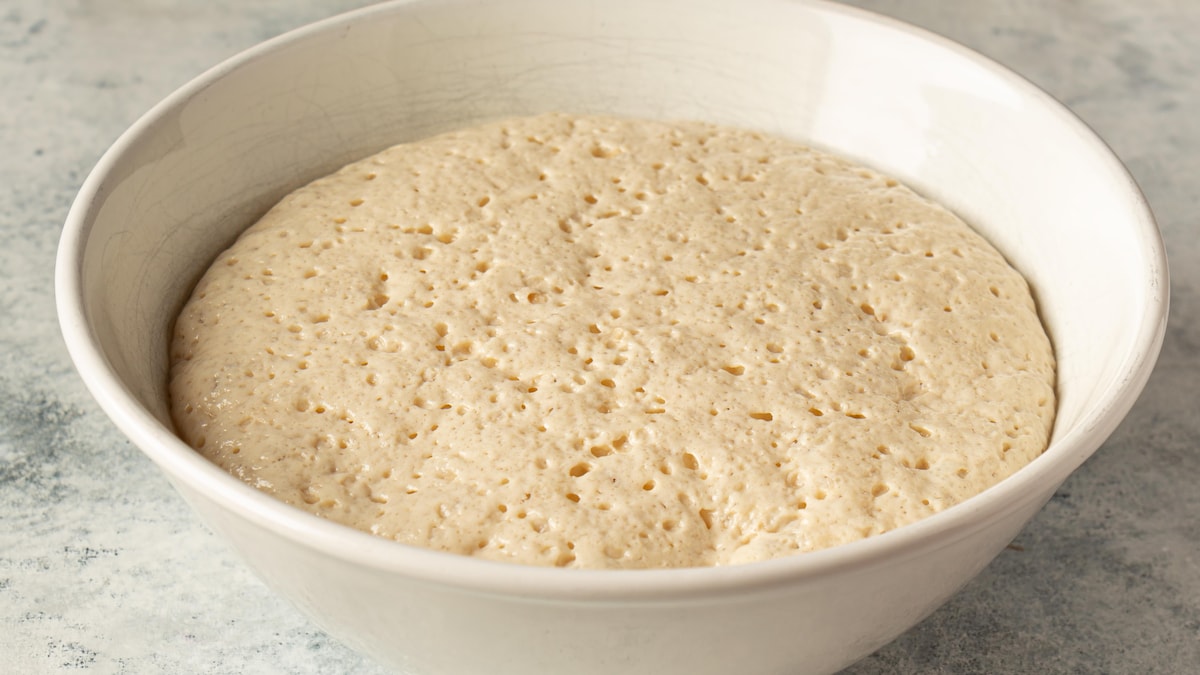
Image source: mordu.com
This starter is added when baking bread, making croissants, or making sweet dough. Remember that this starter should make only 20% of the flour weight, along with other ingredients.
What to Consider Before Selecting a Pre-ferment or Starter
You might want to consider a few things before selecting the starter that’s right for you. They are:
1) Time it Takes to Prepare
Different starters take different times to prepare. For instance, it takes less time to prepare a Poolish culture than a Levain starter. When you use commercial yeast to prepare a Poolish, it takes between 12 and 18 hours. A levain, on the other hand, can take up to a month to prepare since it has to be prepared from a sourdough starter.
2) Ease of Use and Consistency
A poolish is easier to use because of the texture and consistency of using commercial yeast. This is why Poolish is the best, even for beginner bakers. Levain and other starters are not easy to use since they are less consistent and depend on wild yeast to ferment. Additionally, other starters heavily depend on the type of flour used.
3) Levels of Hydration
Poolish has a higher concentration of water than other starters. This is because it has equal parts of water and flour. Therefore it has a 100% hydration level. Other starters have between 40%-80% levels of hydration. They are stiff starters but work just fine. It is important to note that stiff starters require experience to handle.
4) Maintenance Vs. One Use
Poolish is usually recommended to use immediately. However, it can only last long if it has additives. Therefore, most bakers consider it as a single-use starter. Since it is active, a sourdough starter must be fed with yeast and water every day. A sourdough or Levain starter is a perfect choice if you bake every day since you will replenish it every day.
The Bottom Line
Poolish starter is the best for bread baking and pizza dough. Additionally, it gives a unique and delicious taste, texture, and experience. Have you ever tried baking with Poolish before? Using Poolish is a great way of making artisanal goods. It is also a great way for beginners to learn baking.
Featured image source: homebakingblog.com

